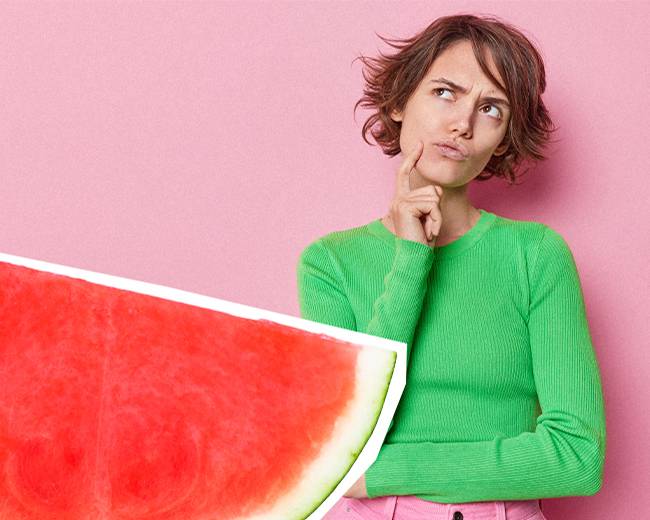Summer is here and with it the temperatures and colours are rising. We choose brighter and more striking tones and, of course, the most fashionable red watermelon arrives to brighten up your days. Summer is synonymous with flavour, quality and health, just like our fruit.
But do you know why it is red?
We are going to tell you the reasons for the red colour that makes it so appetising and why it is related to the fact that our watermelons are very crunchy.
The main reason why watermelon is red is because it has lycopene, a carotenoid responsible for that colour. In addition to giving our watermelon its red colour, lycopene is loaded in every bite with the natural antioxidant that is so beneficial at any age and in any lifestyle.
But there are other elements and factors that influence the colour of our red watermelon, such as beta-carotene (which will help you take care of your skin and that tan that suits you so well), betacyanin (which reduces inflammation and pain in people with inflammatory arthritis), the ripeness of the product, the temperature and the harvesting time.
Each watermelon has to be picked at the optimum moment. If they are harvested earlier, we will have watermelons with a more pinkish colour, and if they are harvested late and are overdone, the red will tend to a burgundy colour. That is why it is essential to know when to pick them. Our professionals in the field are experts in knowing this to guarantee that each watermelon that arrives at the market is at its perfect point.
What is the difference between red watermelon and yellow watermelon?
But not all watermelons are red. In the market we find watermelons of other colours and different varieties, such as the yellow watermelon.
The difference between red and yellow watermelon is the presence of a vegetable pigment (carotenoids) that makes the inside of the fruit yellow instead of red. Through the photosynthesis of the carotenoids, this yellow colour is given to the product. Some research claims that it has a high concentration of citrulline, a vasodilator amino acid.
Although the clearest difference between the two watermelons is the colour, there are also other differences in taste and texture. The yellow watermelon has a much sweeter taste that in some cases reminds us of honey.
We’ll keep the red ones!
In terms of nutrients, both varieties are rich in vitamins A and C, minerals such as potassium, which is essential for muscle function, antioxidants and anti-inflammatory properties among others.
What makes Sandía Fashion so red and crunchy?
Our watermelon is known not only for its intense red colour, but also for its crunchy texture, but do you know why they are so crunchy?
Its crunchy texture is due to the water and natural sugars (fructose) it contains. In addition, these components are responsible for the sweet taste and firmness of the flesh. A perfect balance that makes them a true work of art.
There is nothing like cutting a watermelon and seeing that it ripens on its own because it is at the perfect point of ripeness. And then to discover, when you open it, the bright red colour and the fact that there are no pips to spoil the landscape.
That’s when you can’t help yourself and with the same knife you cut a slice to taste it. And biting into a mouthful of our watermelon is synonymous with the crunchiest taste of summer.
Now that you know more about our watermelons, join the trendy red colour this summer.
Join Sandía Fashion.




